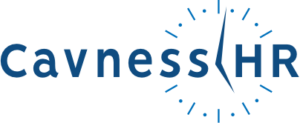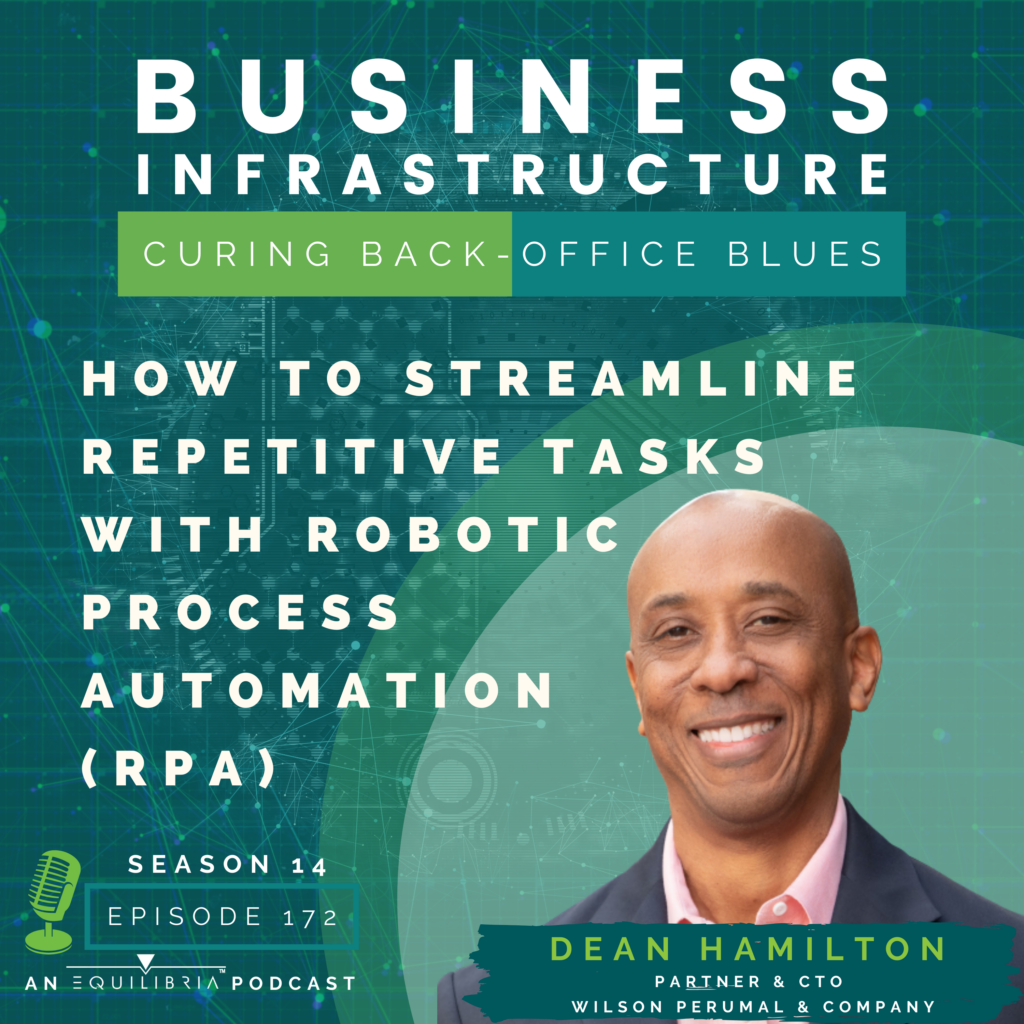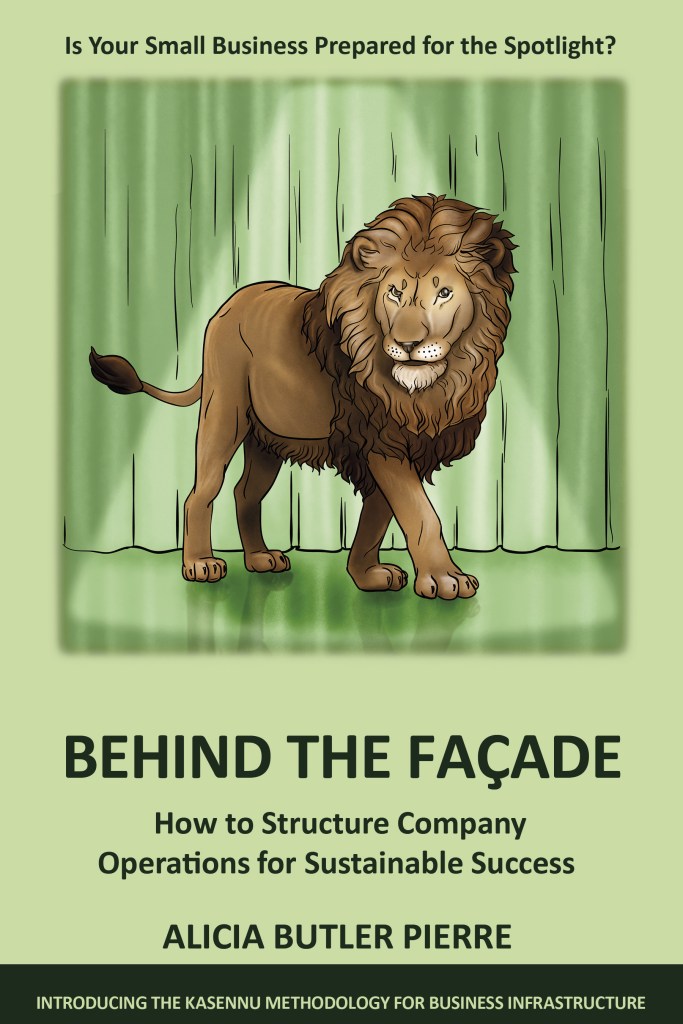Transcript
[00:00 – 00:57] What comes to mind when you hear Robotic Process Automation, does it conjure thoughts of physical robots taking over jobs? Have you ever felt like a robot whenever you do mind-numbing repetitive work? Hi, I’m Alicia Butler Pierre. There’s no shortage of myths and misconceptions when it comes to Robotic Process Automation. And we’re about to hear from an executive and expert technologist who will give us the 411 on what it is and what it isn’t. Yes, it’s totally possible for small businesses to leverage robotic technology, to work with us in streamlining our operations, and not against us. And you might be surprised at how much time it can free up working on administrative tasks, time that can be used on revenue-generating activities instead. This is Season 14, Episode 172.
[01:20 – 03:12] Having a tough time, trying to explain ideas over a video conference? Try the ThinkSmart whiteboard. It’s the fastest whiteboard software in the world and allows you to upload flow charts and write on them while your colleagues are watching remotely. Call us today for a free demo. The number is 1-866-584-6804 or visit us online @getmytablet.com. Now that’s smart, ThinkSmart.
Today’s episode is brought to you by Equilibria, Incorporated. Scale your fast-growing business with less pain by hiring the right people, implementing the right processes and leveraging the right technologies. Learn more at www.eqbsystems.com.
It’s Season 14, everybody, and we’re exploring game-changing technology and it is with great honor that I introduce today’s guest, Dean Hamilton. He’s joining us from Cupertino, California. I can honestly say Dean, I don’t think I’ve ever met anyone. I hear about Cupertino all the time, of course, because of Apple, but I’ve never met anyone who actually lives there. So, this is also a treat. Dean is a Partner and Chief Technology Officer at Wilson Perumal and Company where they help companies thrive in today’s age of complexity. Forbes.com once listed Dean as one of the top eight technology CEOs to watch. He’s going to share with us how they dramatically improve their client’s back-office operations with robotic process automation also known as RPA. Dean, welcome to the show. How are you?
[03:13 – 03:15] I’m well, thanks for having me on your show.
[03:16 – 04:16] Thank you so much. Now, just so everyone will know how we met. We actually met through your colleagues, Scott Stallbaum. And the way that happened, Dean, I’m not even sure if, if you know this, but I happened to be looking for some information, graphical design information on the web that centered around operational excellence and lo and behold, I came across an infographic that your company produced. And that’s what I shared. And Scott happened to see that on LinkedIn and that’s how he and I connected. And that’s ultimately what led us to meeting each other. And as I was reading more about you and your background, it’s so clear that you’ve had a long history, 30 years to be exact of success in the IT space, including several companies that you’ve started and some that you’ve even sold. Correct?
[04:17 – 04:33] Yeah, that’s right. Yeah. I’ve been blessed too. I’ve been in Silicon Valley here from the very early days of the computing microprocessor revolution and I’ve had the opportunity to work at some pioneering companies. And then to start some of my own.
[04:33 – 04:36] Your career started as a software engineer, right?
[04:37 – 05:16] Yeah. That’s right. I started out as a software engineer, building, mostly, telecommunications products. I was focused on, real-time embedded drivers, software drivers for real-time, embedded communication products and came up the, up the ranks, you know, as a, a manager, a director of engineering, and then shifted over to the business side, starting my first company back in 1994. And then, I have been on the sort of general management technology company, general management and innovation side since then.
[05:17 – 05:38] I’m glad you mentioned that because I was wondering, how did you make that transition from being what, you know, a technician/software engineer and into the C-suite. So did you start your own business first before you had your first executive-level position at another company outside of the one that you owned?
[05:38 – 06:17] Yes. That’s right. I, you know, sort of, never actually. I was in the engineering ranks and coming up there, I don’t think I’d ever considered doing a startup or running my own company as a CEO, but I just happened to have been at a company that was sold. One of the companies where I was director of engineering had been sold to a large Canadian company. And, after the acquisition, they decided they wanted to move all the engineering jobs to Ottawa. And, you know, in those days, most Silicon Valley engineers wouldn’t move to Ottawa. Right.
[06:20 – 06:22] It sounds so exciting.
[06:27 – 07:12] And so I was stuck with, you know, kind of, well, what do I do? Do I, I’m not going to move, do I, you know, look for another engineering job. And I had built a team and that team was a very good team and they were sort of all facing the same thing. Do we kind of just go to the four winds and, and one of my team members said, well, Hey Dean, why don’t, why don’t you start something? And, you know, we, we, we’d all love to continue working for you. And that was sort of the Genesis of my entrepreneurial thing. I decided, well, what could I start? And I ended up starting, at first, a consulting company, believe it or not, building, helping other companies build technology products. And then from there started my own product company, the first product company that was sold and so on.
[07:14 – 07:39] And what led you ultimately, because I, I can imagine that the transition from having an and being a founder, owning your own company to going back to working for someone else might not be the easiest transition. So can you talk about that a little bit and what ultimately led you to Wilson Perumal? As I understand it, you’re also a partner there, is that correct?
[07:40 – 08:45] Yeah, that’s right. I’m probably still best known for starting a company called CoSine Communications, which I started in 1997. I took it public in September of 2000. So we had a very large IPO on the NASDAQ and I was the public company CEO for a little while after that. And, you know, you might remember 2000, we had the, we had the telecom bubble burst and, you know, a lot of, large, well-known communication companies were struggling or, or, you know, going out of business or whatever. And many of them were my customers. And so, you know, in that environment, a newly public, startup company was really struggling. I ended up leaving and I had, that was my second company I started. And I decided to take a break after that, you know, you start up companies take a lot out of, out of, the people who start them, like took, I took some time off.
[08:45 – 09:50] And after that, I decided to come back. You know, I spent a lot of time on the general management side as a CEO, and I decided to sort of come back into the business, again, as a CTO, you know, to just kind of reconnect with technology innovation that, you know, that that’s kind of the heart of my background is as an engineering person. And, yeah, so along the way after, after CoSine, I did end up helping to start another company that was sold to Dell. But right around that time, I had met Andrei and Stephen, the co-founders of Wilson Perumal. They had written a book called Waging War on Complexity Costs, which became a bestselling business book on the subject of complexity. You know, we believe at Wilson Perumal that we’re living in what we call the age of complexity that companies are struggling, you know, to grow without, while complexity in the business is actually limiting their capacity to grow or to do so profitably.
[09:50 – 10:49] And so that book was a very successful Andre and Steven ended up sort of starting the consulting firm on the back of that book. And, and a couple of years after I met them through a friend, a mutual friend, and, really, you know, just was struck by the themes that, were, you know, sort of behind their motivation to start a practice that was focused on the, on complexity and struck by their understanding of the subject. And so over the ensuing years, even though I was running other companies, I joined Wilson Perumal’s Advisory Board, and I’m back to being on the company’s advisory board, probably for going on knowing 10 years on the firm’s advisory board. And so I’ve been associated with the firm for a long time. And then, two and a half years ago, I decided to, I was the CTO at a company called Persistent Systems.
[10:49 – 11:40] And I decided to leave and come in as a partner at Wilson Perumal to help with a large AI Project that we had sold to the US army. And, so I came into, do that project and, and be the partner responsible for our digital transformation, clients. So yeah, I’ve known the firm for a long time, and I really, got to kind of get my feet wet with as, as a practitioner in the Wilson & Perumal, you know, complexity approach to consulting and, over the years. And so, you know, it wasn’t, it wasn’t just a brand new, new thing for me. I, I knew for my newest clients and, there was an opportunity for us to make a big difference to the US army. And so that’s, that’s how I got here.
[11:40 – 11:58] That’s really, that’s a really cool story. And speaking of this AI, this very large AI project that essentially brought you in, as the brought you into the role of CTO. I’m curious, how long has the company itself been around?
[11:59 – 12:06] So I think the firm is probably, and I might be off by a year or something. It’s probably about twelve years old.
[12:06 – 12:54] Twelve. Okay. And I’m sure, you know, as you, as you just alluded to, Dean you’ve, you’ve been at this for a very long time, so you’ve seen so much, you’ve seen the evolution. And I think it’s really interesting. The company being centered around helping companies grow without increasing complexity. And again, going back to what actually brought you into that role as CTO, being a large AI Project, artificial intelligence, but I know we’re going to talk today a little bit more about RPA, Robotic Process Automation. So I’m wondering in, in, in your most basic definition for the layman who might be listening right now, what exactly is Robotic Process Automation?
[12:54 – 14:04] Yeah. Robotic Process Automation is, it’s a form of what we call no-code, or perhaps sometimes low-code automation that is focused on automating repetitive, repetitive tasks, you know, that you would do, you know, using a computer or using a, you know, a set of computer applications, automating those, those, repetitive tasks, but automating them essentially through the graphical user interface. You know, a lot of traditional automation is done using, you know, programs, you know, programming-centric interfaces, right, where, where you, you have to write some code and you use an application programming interface, and that’s how you can, you know, move information between two systems or automate, you know, you produce a set of automated steps, to do something involving, you know, talking computers, one computer system, talking to each other, but robotic process automation instead tries to the bot.
[14:04 – 15:04] The software automation agent essentially tries to emulate the human being and behave, with respect to the application, the way the human being would interact with it. And when we interact with our applications, we don’t interact through some API. We interact with mouse clicks and keystrokes, and, you know, we use what we call the graphical user interface. And so RPA is a technology that lets a, sort of a software agent or call a bot, do the, the same kinds of things that you and I would have to do by pointing and clicking and typing, but do them in a very efficient manner to sort of offload us of those highly repetitive tasks. And, you know, sort of the origins of this you might think of in something that you’re very familiar with. We’re, we’re, we’re very familiar with opening up a browser. I may be going to, you know, an e-commerce site or something like that.
[15:04 – 16:11] And maybe your browser has some capabilities in it where when you get that page that asks you to type in your address and maybe your phone number, and maybe even your credit card information or something, your browser will say, Hey, I remembered that, you know, I know this information, do you want me to fill that form in for you? And then you can press a button and it’ll just, you know, it’ll fill in the information it has. Now, you normally would have to type that information in, but there’s a little agent in the background that is smart enough to understand that webpage and fill that form in for you. So it’s just doing the tasks you would do faster for you through the same interface you would use the graphical user interface. Well, that’s where the roots of robotic process automation sort of started. In the ability to say, look, we can now design pieces of automation that are rules-based that a business user can design that can, have that, that piece of automation do some really repetitive and annoying task.
[16:11 – 17:03] Just take it off and do it efficiently for them the same way they would essentially do it. Without having to change the program, without having to get a new API, just do it, just pretend to be me, but do this stuff for me. You know, I have to type these 400 things in, one after another. And, you know, switch over to this email and maybe copy this information out and then put it into this form. It’s, it’s boring, it’s rote, it’s error prone. We can make a very simple bot, do that work for you. And the beauty of the mature technologies we have right now is that it doesn’t take a programmer to create the bot, but a business user or somebody that is active would actually do that job themselves and can actually create the automation.
[17:03 – 17:24] Hmm. Interesting. I have so many questions based on what you just said. So I, I appreciate you sharing the example of being able to just automatically have a form, be populated with certain answers, you know, first name, last name, mailing address, so forth and so on. I thought those were cookies, but I guess…
[17:24 – 18:20] No, cookies are different. Cookies, basically where, usually the owner of the website, the designer of that website, a web page will store and retain certain information in your browser that will persist after your browser session ends. So that the next time you return there, they remember certain things about you, but that’s, that’s different than, you know, sort of general information that you control, like your name and address and phone number, or maybe your credit card information or whatever that you can have the browser populate for you that, that cookies are more used to, so that the website knows that, you know, when you’re coming back to it, it kind of knows where you left off or who you were or what you did last or something like that.
[18:22 – 19:22] I’d love to get into even more examples, because one of the things that’s also coming to mind, you know, especially listening to you say that it doesn’t take a programmer now, nowadays to actually create a custom RPA solution for your business. And, I’m just thinking of the importance of first understanding what your workflows are. What are your processes and extracting or pointing out what those truly repetitive tests are that you can, I guess, automate through, through some type of an RPA solution. But before we get into that Dean, let’s go ahead and take a quick break so we can hear more from our sponsor. When we come back, I’d like to get, take a deeper dive into RPA, maybe even get into some examples of how you all would engage with a client and possibly come to a point where you recommend an RPA solution to help them streamline some of their back office operations.
[19:26 – 20:44] Did you know that small business owners spend 25% of their time on HR related items? This time is better spent taking care of employees, customers, and building your business. CavnessHR delivers HR solutions to companies with 49 or fewer employees through their HR platform. Specifically, they provide you access to a dedicated HR business partner. This is important because every year small businesses lose a collective 27 billion US dollars or roughly $10,000 per employee. Their platform can revolutionize your HR operations. And you’re in luck because as a listener of the Business Infrastructure Podcast, Cavness HR is offering you an opportunity to be a part of their beta testing. Just click the CavnessHR link in this episode’s description, or go directly to CavnessHR.co to sign up. As a bonus, you’ll also receive three months of free HR services. Take it from me. I had to learn the hard and costly way. It’s better to spend your time working on your business than in it. Visit CavnessHR.co to sign up today.
[20:44 – 21:59] Okay. We are back and before the break, Dean, you, you were starting to share with us all of the details about what RPA is and thank you for clearing up the confusion that I had personally, as I listened to your example about being able to automatically fill out a form. And you know, the fact that that’s not necessarily cookies. And so I appreciate you explaining the difference between, you know, what, what would truly be robotic process automation versus cookies. But technology is, as we know, just one of the three elements of business infrastructure, the other two being processes and people. And so for those who are listening to this show for the first time, business infrastructure is a system for how you link your people, your processes, and your tools and technologies to ensure that growth happens in a profitable and sustainable way. Dean, I’m wondering if you could take us on just maybe an example of a client engagement. I would imagine that you all are assessing their workflows first. How does that work and how do you reach a point where you can help them identify when RPA may be a useful technology for them to leverage?
[22:00 – 23:32] Yeah, absolutely. I think at least for your team, you’re touching on something that’s I think very critical because, you know, we sort of live in a golden age with these no code technologies, whether it’s RPA or it’s, it’s more mature tech, a more mature form of it called, you know, intelligent automation or cognitive RPA or business process management technologies. We live in this, in this world where these technologies are more and more easily accessible to business users, business subject matter experts who are not programmers. And so, you know, on one side of the equation, that’s really, a really powerful thing. There are these, these powerful tools that are now, you know, being sort of democratized. On the other hand, there’s a danger in thinking that these tools are magic bullets to solve your business problems. These, you know, and we practice in this area of complexity and, you know, maybe I’ll just step back for a minute and just say, you know, if you, if you think about, as you were talking about, you know, your, your, the sort of the systematized, you know, view of business infrastructure, and you’ve, you’ve got your, your people in your organization, you got your products, you’ve got your process and technology. Complexity, especially, first of all, complexity is not all bad, right.
[23:32 – 24:45] Some complexity is good complexity, right It’s the complexity that differentiates your business, right. That creates barriers, competitive barriers against your competitors. All of that’s good complexity, but a lot of complexity we call adverse complexity is the kind of complexity that is, you know, holding your business back. It’s either eroding costs in the business or it’s slowing down growth. And that complexity tends to hide in the business in places that you don’t see, because it, it sort of emerges at the intersections of the linkages, the connections between those people, people on org, you know, process and technology and product. It’s at the connection points between those things that adverse complexity arises and that adverse complexity, you know, you often see, you know, traditional kind of consulting companies might come in and they may be a little narrow part of the business, and they’ve got to do some optimization project and they work on this, you know, you know, you know, just, you know, very, very well done work to make some part of the business more efficient.
[24:46 – 25:38] And then they go away and, you know, all of the, all of the plans and all of the, you know, the spreadsheet math showed that that work should result in a certain benefit falling to the bottom line over time. And a couple of years later, you know, the executives are looking back and they’re going, well, what happened? We never got that benefit. You know, we did all that work and it didn’t have, and we didn’t get to see the benefit. What happened? Well, often what happened is you didn’t account for the add, the cost of the adverse complexity. So what happened is you optimize one area, but because of the linkages to other areas that you can see you de-optimized those areas that you got the return in this little area, and then the benefits got eroded elsewhere in the business. Right. And why do I raise that?
[25:38 – 26:41] And I raised that in, in the context of things like intelligent automation and which RPA is a part in that, again, as you say, if you don’t have a good, fundamental understanding of the processes themselves, and if you’re not taking steps to basically, you know, to, to first think through how to optimize the processes before automating. What you can be doing is, you can be institutionalizing and baking in with the automation. You can be baking in, you know, structural de-optimizations that you’re going to have to live with for a long time, you know, because the automation, once you create it, you know, people then sort of look away, it’s doing its thing, right. And no one wants to, no one wants to break it. Right. Right, right. And so, so it’s much better to say, you know, first let’s understand, really what’s holding the business back.
Image Source: RPATools.com[26:42 – 27:50] Then let’s look to see how we can improve the existing processes and take that complexity down in the existing processes, the adverse complexity. And then once we do that, then let’s look out of the, in the remaining portions of the process, where are there areas, where there are highly repetitive tasks that are either, you know, just taking a lot of human effort and time to do, or their risks are in their error prone perhaps. And then let’s see how we can automate those. And it is not always the right answer for automation. So sometimes the answer for automating those is writing a script or writing a program that integrates two things together and automates them. But sometimes it is, that’s not possible to do. And sometimes the right answer is to automate at the graphical user interface level, the point and click level. And at that, and, and so for that subset of, of opportunities, then we recommend an RPA is the right, the right solution.
[27:50 – 28:56] And you can’t just, you know, it might sound like it’s magic. Oh, you create this little automation and then everything is good. But even once you’ve decided to go down the RPA path, then you have to really sort of think through, okay, how do I design the automation? How do I maintain the automation against, because maybe it’s automating against some part of the user interface. And that user interface may change the next time you get an upgrade to that product or an update to that website or whatever. Right. So now the automation itself has to be improved. What happens when the automation breaks and fails, you know, does every, has everybody now forgotten how to do that process because the automation was doing it and how does the business continue? Right. What happens with the cybersecurity issues around the automation and how those are maintained? How does the automation itself affect the fact that there’s audit automation working in this area perhaps, perhaps affect areas that are outside of this narrow, this narrow space, right.
[28:56 – 29:48] You have to think about it as not just in the local business, functional, narrow business function, where you’re automating, but is there a broader impact on the broader operational area, a business unit or across the whole operation that you need to think of to make sure that maybe the faster pace that the automation is producing can then be absorbed by those other areas. So there’s a range of complex issues. You can, you, you can use this new technology and you can have it really become, you know, a powerful tool to actually, you know, propel your business faster. Or you can have a kind of a Pollyanna view of it and you can apply it and you can look back and you can see that what you’ve done is you’ve used automation to just create another layer of adverse complexity that the business has to deal with.
[29:53 – 31:14] You know, as I’m listening to you, I’m thinking, good God, why would you ever, why would you even go there? You know, because you’re, you’re posing all of these questions. How do you design it? How do you maintain it? What happens if it fails? You need to take into account cyber security, business continuity planning, gee whiz. So, two follow up questions based on everything that you just shared, which was absolutely phenomenal. One, I’m thinking as I, as I listened to you kind of recite all of those, those questions, those things that you need to take into account those factors. I’m thinking of, okay, you need to have people on your team who can be around to help maintain it. And if something breaks or to your point, technology is constantly being updated. What used to work yesterday, may not work tomorrow. And do you have a backup plan in the event that it doesn’t work? Who are some of the key people that a much smaller company, micro-enterprise level, let’s say, who do you recommend they have on their team? Do they contact someone at your firm that, that they can always count on to be there to help troubleshoot these different issues? Or is there someone that they should be looking for to have, you know, on, on staff?
[31:16 – 32:15] Yeah, that’s a great question. Well, first of all, just to be clear, our firm is a, we’re a strategy firm, right? We’re a management strategy consulting firm. So for our clients, we generally consult at the top levels of C levels of the company. And we’re trying to help those top level executives understand how to transform their businesses for the future and how to take complexity out and how to apply technology in ways that don’t add complexity. We don’t typically do implementations ourselves, although for some clients. So for some clients we do, they ask us to do help them with what we call proofs of concept, where we actually, you know, do a little, a little small implementation, so everybody can see the power and understand what it does, but really, you know, I think if you’re going to embrace low-code automation in a big way, and I, and I want to be clear that RPA is just the, sort of the first step into that world, right.
[32:15 – 33:23] Because there are other things like intelligent automation where RPA and AI or machine learning is used to supplement the RPA to make more sophisticated decisions than the highly repetitive, sort of rule-based decision-making the traditional RPA can support, or you can, you, you can start to move into your things like intelligent document processing. That’s using things like natural language processing and, and, and the OCR and machine learning all together to extract data from documents and classify it, and then prepare it. So the RPA agents can go into systems such as a whole continuum, right? That this fantastic automation capabilities are starting to come into businesses. But really we do think that, you know, if you’re going to do this well, you really need to build, you know, what we call a center of excellence for automation in your organization. You know, you, you, you, you need to, you know, automation, can’t be something you’re just started dabbling with around the edges.
Source: https://www.coreconcepttechnology.com/about-us/center-of-excellence
[33:24 – 34:34] You’ll get it 80% of the way there. And then the next 20% of the way will be extremely painful. But you know, if you can create a center of excellence inside your organization, maybe existing people who understand, you know, the, the methodologies, you know, the way to sustain and maintain these things can, you know, provide some governance and oversight for, you know, the business people, the business practitioners who are using the automation to put guardrails around it, to make sure that they’re doing it in ways that help them, you know, accomplish their goals. But don’t put other elements of the business at risk, you know, you can form, but you can create a very sort of systematized robust approach to employing automation in even smaller organizations. And that’s what we try to help our clients understand, right. With all of these things. There’s, you know, there’s, it’s the two edged sword, right. You can get the benefits, but those benefits also come with risks. Right. And you have to understand both sides of that and prepare for them.
[34:34 – 34:49] Are there any off the shelf solutions that you can recommend, Dean, in terms of RPA in and even with some of these other technologies that you mentioned, OCR, you know, intelligent document processing, intelligent automation?
[34:50 – 35:51] So the OCR is optical character recognition, which has been around for a long time, but has gotten much better in the, in the, sort of, AI, ML world that your machine learning model world that we live in, you know, a computer vision systems are a good example of, you know, how, AI is transforming that, that, you know, that world, I try to stay away from recommending product, vendor products. There are a number of really good technologies out there in the RPA world, from vendors like blue prism and automation anywhere, UI path. There, there is a whole Microsoft with their power apps that has a kind of an RPA solution, in their actual world. And, so there’s no lack of technologies, they all have their, you know, strengths or weaknesses, but they’re all pretty similar in capabilities at a high level.
[35:51 – 36:52] And again, they don’t, you know, because this is business process automation in a way, or maybe, you know, at least task level automation at the lowest level. They don’t come with out of the box solutions in the sense that you have to know what you’re, you know, we’re, we’re, you’re bringing a tool in, RPA is essentially a tool. And then you have to apply the tool to the process you want to automate in your business, right. A tool gives you a mechanism to actually create the bot, but you don’t, you know, you don’t get bots that are off the shelf to do anything meaningful because the bot doesn’t know your business. But you get to create that for your business and, and, and you can do it, you know, if you, you know, if you want to just build a little proof of concept that does something, you know, you have, you have a, an email or a PDF document that comes in and you want to scan it, and you want to find these certain fields.
[36:52 – 37:46] You want to take it out. You want to open up your ERP system and you want to go to these places and you want to put this information into, you know, into the invoice or whatever it is. and you want to build that little, you know, it’s, would be normally kind of a swivel chair activity for a human being, where I would, you know, open up my email and get the PDF and I’d look through it and I’d find the information I do control, do control C, and then I’d open up the other application. If you want to build the automation for that, you can do it very quickly. You as a, just a business person who does that job every day, once you learn these tools, you can do that job yourself relatively quickly. You have to have, I think, some, very high level understanding of logic, I would say.
[37:46 – 39:04] I wouldn’t say programming, but you have to understand, you know, logically in your mind, how to build the flows and how, how the decisions are actually made. But if you do that job every day, you can reduce that basically to a, you know, a flow chart, if you will. And then these systems are very much, these tools look like essentially you’re building that flowchart in the tool. And then that flow chart, that the tool converts that into basically a piece of software, a bot that will actually go and do that thing for you. Now, the tricky part is you can get to the place where you can just, Hey, I can, yeah, I did it once it works. It’s great. Yeah, that’s what I say, that’s the 80% level, but to get it to work a hundred percent of the time, when all things go around the edges, the exception conditions, the things that could go wrong. Well, that’s what really takes the discipline and the time and the testing and everything that what we call the, in programming, what we call the happy path, you know, it works, it works one time, you know, that’s insufficient to create a tool that is actually good in supporting the business. So, that’s where a little bit of discipline comes from.
Source: https://www.digitechsystems.com/wp-content/uploads/2020/01/Process-Automation-Flowchart.pdf
[39:05 – 39:23] I knew this was going to happen, Dean, just as I, as we’re getting right into the heart of things, we have to start wrapping up. But I do want to ask you one more, really quick question, because something that I see often now, when I go to so many different websites is a chat bot. That, that’s different from RPA, right?
[39:24 – 40:45] Yeah. It’s different from RPA, but it does fall into this larger class of automation capabilities that are more and more accessible. You know, chatbots are, are now, like you said, they’re, they’re everywhere. And very often, sometimes what you’ll see now is you’ll see, you know, a chat bot doing the inner frontline interaction with somebody coming to your website, getting some information, you know, and then that basic information maybe gets passed somewhere in a document or something somewhere to another channel where maybe then another piece of automation takes that information and, interacts with it in some way, looks at it, makes a decision, puts, it opens up another system, puts some information in. So, you know, you see pipelines, if you have different types of automation technology flowing into each other and feeding each other to create very complex or to automate, sometimes fairly complex and submit sophisticated workflows. But it, you know, it takes some time to be able to get there.
[40:46 – 41:21] Got it. I think I understand now. I actually have a client that I’m working with right now, and they have volumes and volumes of paper that ultimately needs to be scanned and logged into these different forms. As the, as you, as the example, you mentioned at the very beginning of our interview. So, it sounds like that would be maybe a good candidate or worth exploring, you know, the possibility of integrating RPA into, you know, reducing the amount of repetitiveness for human beings.
[41:21 – 42:36] Yeah. And that’s a very classic use case where you would use, for instance, you know, something we call intelligent document processing, which is a way of, sort of, using, you know, algorithms of various sorts to basically understand the documents that have, you know, unstructured data, you know, and, and so they might be PDF documents. They might be some invoices or whatever, and, and you can use you, you know, or there might be emails or whatever. And, and you, you, you can process those documents, in ways where you can extract information, you can classify it, you can validate it, and then you can use RPA. So you’re using intelligent document processing to understand the document and get the pieces of the document you want to get to those pieces. And then you’re using RPA to take those pieces and logging into the systems of record that you want to transfer that information to. That’s a very natural and normal kind of implementation of two of these automation technologies, intelligent document processing, and RPA working together.
[43:11 – 44:20] This has been so, so helpful, Dean, thank you so much. This was almost like, you know, an RPA 101 kind of class, at least for me. So I really appreciate you again, taking time to speak with me and educate me as well as the listeners right now, more about that particular technology and for explaining the fact that it is along a continuum, and it’s kind of a starting point as you start to look into more opportunities to automate some of your different workflows and processes. So we started off, you know, talking about your background in telecommunications as a software engineer, how you were able to eventually you, you started to, you started your own company, started having these C level positions in other companies, and ultimately landed where you are now. And just to repeat your definition of RPA, it’s low code automation focused on automating repetitive tests on a computer or a set of network computers through a graphical user interface. Did I get that right?
[44:21 – 44:22] Absolutely.
[44:22 – 45:13] Okay. See, I was listening. I was paying attention and basically you, you also described robotic process automation as, as this “bot,” that’s trying to emulate the repetitive tests of people that may be performing these different tasks within, within a company. Let’s see. I mean, there’s so much to say here, and I know I have to go through this really quickly, but some other key points you mentioned, you know, the fact that we are now in the golden age of no programming technology, the fact that this technology is more and more accessible, it is a great thing. But as you pointed out, there’s also a danger in it because it kind of has a fault, becomes susceptible, I should say, to that magic bullet syndrome that you talked about, and the fact that so often we can be so enamored by these different technologies.
[45:13 – 46:22] And we watched these demos and the salespeople are doing, they’re doing a great job in, in selling us on these technologies and enticing us, but unless we’ve actually taken the time to analyze our processes and our workflows to understand if that technology will actually enhance, or as you would say, reduce complexity even, it’s not worth the investment. So I also appreciate you sharing with us at a very high level, the process that you all would recommend to some of your clients starting with: first, understanding what’s holding your business back next, exploring where the complexity or the, the opportunities for reducing complexity, where do those exist. And you have to first understand what your actual process or workflow looks like unless you have that documented identifying where repetitive tasks may exist. And to your point, Dean, RPA is just one of many different technologies that can be recommended in terms of automating certain parts of that process.
[46:22 – 47:37] I do want to also mention, because I think it’s worth repeating the fact that once you, once you go down this rabbit hole, you’re in it, and it’s so important to build that center of excellence for automation in your company. And again, being able to always make sure that you can answer the following questions anytime you implement, I would say probably any technology, how to design it, how to maintain it, what happens if, and when that technology fails with cybersecurity measures, do you need to have in place, who’s going to be around to actually do consistent testing. Don’t just test once, you have to test multiple times to make sure the technology is actually doing what you need to do. And then obviously the importance of having those business continuity plans in place. This has been fantastic, Dean. I can’t thank you enough. If you want more details about Dean, Wilson Perumal and how your company might benefit from not just robotic process automation, but other types of process automation as well, make sure you connect with Dean. You can also find him on LinkedIn. Dean, thank you so much for taking time out to speak with me today.
[47:38 – 47:41] Thank you, Alicia. I really appreciate it. I really enjoyed it myself.











